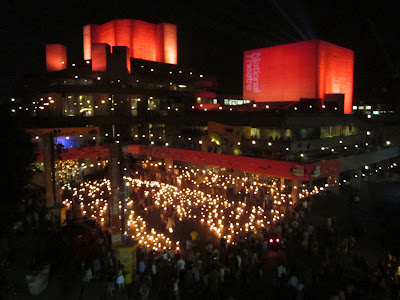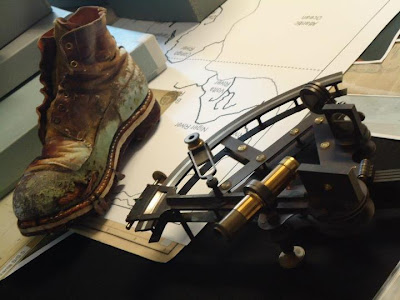 |
| The National Theater: Photo by Jenny Collins |
I had the chance to see 4 plays at the National Theater during my stay and on my last day in London was privileged to take a back stage tour of the theater itself and then of their archive. A theater archive is a slightly different beast, how do you catalog a lighting display that's almost a half mile long? Or boxes and boxes of props?
The answer is carefully and diligently.
The archive has materials dating back from 1963, when the National Theater was started, to the present day. The archive is open to anyone who makes an appointment and when there patrons can view materials such as programs, posters, photographs, production drawings, video and sound recordings of NT productions, press cuttings, prompt scripts, costume, lighting, and sound information and more.
The NT production recordings that have been filmed within the past decade are done from multiple angles, and nowadays with HD cameras, allowing researchers an unprecedentedly close look at performances that formerly would have been ephemeral.
For those unable to make it to the archive their catalog can be searched from their website anywhere in the world. You can also request some materials be scanned by archivists and sent to you for research purposes. The NT Performance Database, one of their catalogs, contains details of every play ever staged by the National Theater. While the NT Archive Catalog contains entries for the items held in the Archive collection, such as props, set pieces and other items used on stage.
The National strives to be inclusive and on the cutting edge of technology and is moving steadily forward with digitization of those items in the collection it is possible to digitize while at the same time looking into tablet and other technologies to bring the archives to a more global audience. Audiences of the NT Live screenings are now able to by digital versions of production programs, with special digital only video interviews and interactive features not available in a paper medium.
The National Theater is truly one of the Seven Wonders of London and I can't wait to go back!
Links
National Theater Archive WebsiteThe National Theater Archive Catalog
The National Theater
National Theater Live!











